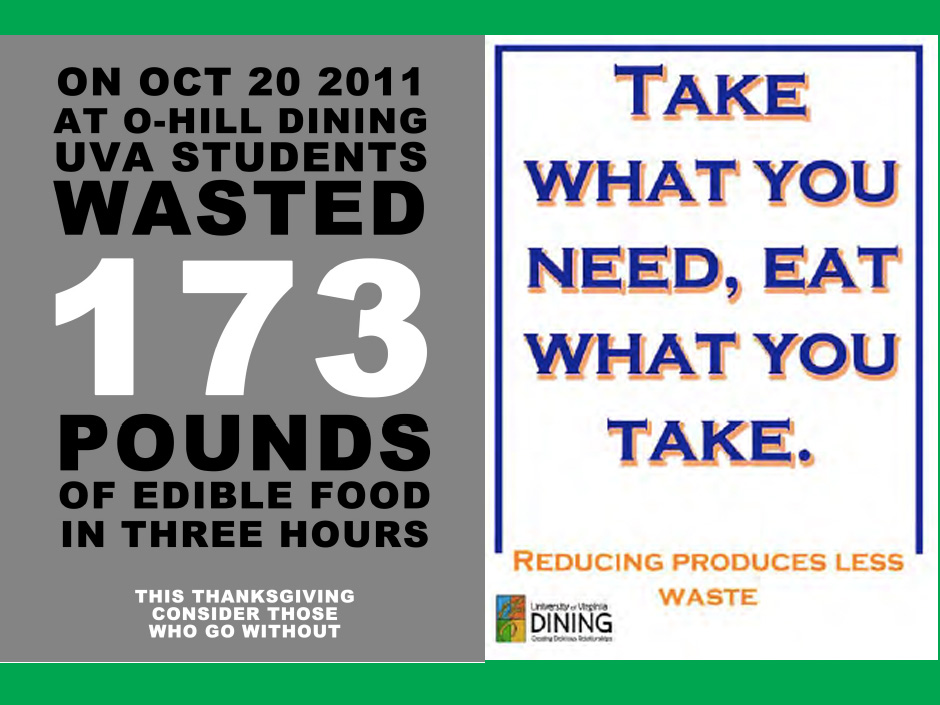Project Observatory Hill Waste Audit
OHILLWaste (click PDF)
Fall 2011
Team members: Moira Cronin, Wilson Hammett, Meredith McKee, Samantha Taggart
One of the objectives of the Observatory Hill Waste Audit Project was to quantify food waste produced by students in the Observatory Hill Dining Hall at the University of Virginia. The intent of our publicity efforts was to raise awareness among the student body of the collected data and its impact. We also aimed to work as a liaison between UVA Dining and the student body, and to make suggestions to both parties regarding ways to improve sustainable practices at the university through addressing food waste. We hoped that by aiding in the reduction of student food waste, UVA Dining would benefit economically from our project.
To accomplish our first objective of quantifying food waste, we conducted an audit on October 22, 2011 to measure the edible solid food wasted by students during Observatory Hill’s lunch hour, from 11am-2pm. We found that in this three-hour period, students at O-Hill wasted 173 pounds of edible solid food. There were a total of 1,314 students that entered the dining hall during this time period, averaging .13 pounds of waste per person. We used this figure and its shock factor to drive our publicity campaign to achieve our second objective. We were able to accomplish our third objective of serving as a liaison between (and its sustainability-minded division Green Dining) and the student body, by constantly coordinating our efforts with the goals of our community partner, Kendall Singleton, the director of sustainability for Green Dining.
By the end of the semester we have successfully conducted a waste audit, launched an awareness campaign and fostered collaboration with Green Dining concerning future improvements and audits. We hope that future Global Sustainability classes will continue to develop this partnership with Green Dining with these objectives in mind.

